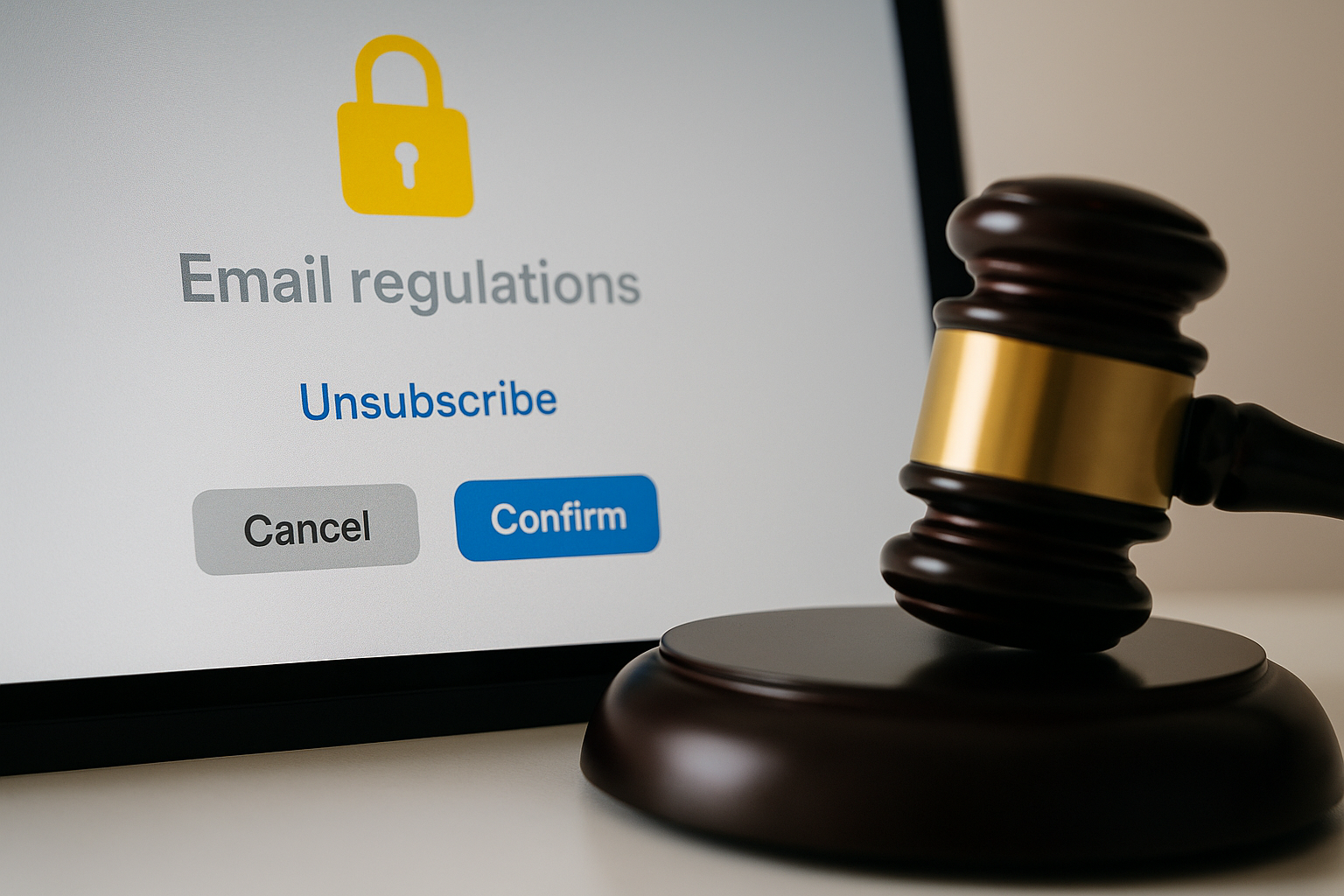About the author:Darren Blumenfeld is the CEO and Founder of InboxAlly, an email deliverability platform trusted by growth-focused marketers. He’s previously founded HonestMail, worked at NASA, and holds degrees from Tufts and Columbia. His passion for tech, education, and creativity continues to inspire innovation in email outreach.
Mastering bulk email best practices is the key to standing out in today’s crowded inboxes. Whether you’re running cold outreach or a subscriber campaign, this guide breaks down the 13 most effective strategies to improve deliverability, boost engagement, and maximize results from your bulk email marketing.
13 Expert Tips for Bulk Email Success
1. Build an Email List
Building a high-quality email list is paramount for successful email marketing in 2025. The process employs organic strategies like website subscription forms, lead magnets, and social media promotions to attract genuine subscribers.
In addition, focusing on quality over quantity ensures that the list comprises individuals genuinely interested in receiving communication. Doing so reduces the risks of purchasing email lists, such as low engagement and potential issues with legal obligations.
An organic email list enhances deliverability and engagement rates, fostering more substantial connections with the target audience.
By continuously refining and expanding the list, businesses can create a solid foundation for effective email marketing campaigns and drive meaningful results.
2. Personalize and Segment Your Email List
Personalization allows bulk email senders to tailor email content to individual recipients, making the messages more relevant and engaging.
Businesses can foster stronger connections and trust with their audience by addressing recipients by name and customizing content based on their preferences and behaviors.
Secondly, segmentation enables bulk senders to categorize their email list into distinct groups based on various criteria such as demographics, purchase history, or engagement levels, which are important components of audience segmentation strategies.
In addition, this allows marketers to send bulk or mass emails that resonate with specific segments. As a result, it increases the chances of recipients responding positively to the content and offers.
Combining personalization and segmentation allows businesses to deliver highly targeted and relevant emails. This leads to higher open rates, click-through rates, and conversions.
Moreover, these practices improve customer satisfaction and loyalty, as recipients feel valued and receive messages that align with their needs.
![]()
3. Optimize Emails for Mobile
Mobile usage has witnessed an unprecedented surge in recent years, with an impressive portion of users accessing emails on their smartphones and tablets.
As per current statistics, 65% of emails are opened on mobile devices, indicating a significant shift in consumer behavior towards mobile-first experiences.
A well-executed responsive design ensures that emails automatically adapt to different screen sizes and orientations, providing recipients with a seamless reading experience regardless of their device.
Email marketers can use fluid grids, flexible images, and media queries to create mobile-responsive templates that look visually appealing and function optimally on various devices, from smartphones to large desktop screens.
Through thorough testing, marketers can ensure that their mobile-optimized emails render correctly and maintain consistent branding and user experience across all platforms.
This meticulous testing process helps identify and rectify any potential issues, ultimately improving engagement and conversion rates for mobile users.
4. Create Interactive and Engaging Content
Interactive content is one of the best ways to capture attention and keep people engaged, especially when inboxes are full of marketing emails.
When email inboxes are inundated, interactive elements like GIFs, videos, quizzes, and surveys stand out and entice recipients to interact with the email.
Interactive content fosters a two-way communication channel, encouraging recipients to engage with the brand and its offerings actively. This active participation enhances user experience, increases brand recall, and drives higher click-through rates and conversions.
Engaging content evokes emotions, making the brand memorable and strengthening customer relationships.
Moreover, interactive emails help gather valuable user data and insights, aiding in better understanding customer preferences and behavior.
Marketers can utilize this data to personalize further and segment future email campaigns, optimizing their marketing efforts and achieving better results.
By embracing interactive and engaging content, businesses can break through the cluttered email landscape, boost user engagement, and cultivate a loyal customer base that eagerly anticipates their next email communication.
5. Schedule Your Campaign
Timing plays a vital role in determining the success of bulk email deliveries. A well-planned email marketing campaign ensures that messages reach recipients when they are most likely to engage with them.
By analyzing past email performance and considering factors like time zones, marketers can optimize the timing of their email deliveries to achieve higher open and click-through rates.
Moreover, partnering with a reliable bulk email marketing service allows businesses to schedule and automate campaigns, streamlining the process and ensuring timely delivery.
By carefully scheduling email campaigns, businesses can enhance their reach, engagement, and, ultimately, the success of their email marketing efforts.
6. Track User Behavior
Analyzing user behavior provides valuable data on which email marketing campaigns resonate best with the audience and which content drives the highest engagement.
This information empowers marketers to make data-driven decisions, refine their bulk email strategies, and create more targeted and personalized content.
Moreover, understanding user behavior helps businesses tailor their future bulk email campaigns, ensuring they deliver relevant content to the right audience at the most opportune moments.
Partnering with a reliable bulk email provider that offers comprehensive email tracking capabilities further enhances the ability to optimize email marketing efforts and drive tremendous success.
By tracking user behavior, businesses can continually improve their email campaigns, increase their ROI, and foster stronger connections with their audience.
7. Monitor and Analyze Performance
By tracking key metrics like open rates, click-through rates, and conversion rates, businesses can measure the effectiveness of their email campaigns, identify inactive subscribers, and adjust strategy accordingly.
This data-driven approach allows marketers to identify opportunities for improvement and refine their strategies to better resonate with their audience.
Understanding individual recipient behaviors and preferences enables enhanced personalization, strengthening customer connections.
Additionally, by allocating resources effectively and focusing on high-performing campaigns, businesses can optimize their marketing efforts and maximize returns on investment.
In the competitive email marketing landscape, constant monitoring and analysis are essential to stay ahead, remain relevant, and drive increased customer engagement and business growth.
8. Keep it Short, Crisp, and Free of Fluff
For several compelling reasons, keeping email messages short, crisp, and free of fluff is essential in mass email service marketing:
Firstly, recipients receive many emails daily, and attention spans are limited. By crafting concise and to-the-point emails, businesses can capture recipients’ attention and deliver the intended message effectively.
Secondly, brevity ensures the email’s main call-to-action is clear and prominent, leading to higher click-through rates and conversions.
Irrelevant or excessive content can dilute the message and distract recipients from taking the desired action.
Thirdly, a clutter-free email layout enhances the overall user experience. Clear and well-organized content lets recipients quickly grasp the email’s value proposition and respond positively to the offer or information presented.
Read also: How Long Should a Cold Email Be?
9. Customize the Subject Line and Preview Text
Customizing the subject line and preview text of your emails in mass email marketing is a fundamental practice that can significantly impact the success of your campaigns.
With a crowded inbox and recipients’ limited attention, personalized subject lines capture their interest and encourage higher open rates.
Tailoring the subject line to individual preferences, demographics, or past interactions creates a sense of relevance and urgency, prompting recipients to click and engage with your emails.
Likewise, the preview text complements the subject line, providing a glimpse of what the email entails. A well-crafted preview text offers additional context, enticing recipients to open the email and explore further.
Businesses can craft compelling subject lines and preview text that resonates with their audience by leveraging data from customer profiles and behavior. As a result, it increases email engagement, conversions, and, ultimately, a stronger return on investment.
10. Offer Exclusive Discounts and Deals
Offering exclusive discounts and deals in mass email marketing holds significant importance for driving engagement and conversions.
Firstly, discounts and deals create a sense of urgency and incentivize recipients to take immediate action. Limited-time offers, or exclusive promotions, encourage recipients to open the email, click through to the website, and make a purchase, increasing the chances of conversion.
Secondly, exclusive offers make recipients feel valued and special. By providing unique benefits to email subscribers, businesses foster a sense of loyalty and appreciation. This leads to higher customer retention rates.
Moreover, discounts and deals are powerful tools for attracting new customers. By showcasing compelling offers, businesses can entice potential customers to subscribe to their email list and eventually make a purchase.
11. Maximize Email Deliverability
Deliverability and email authentication are critical aspects of email marketing that ensure emails reach the recipients’ inboxes and avoid being flagged as spam. If mailbox providers don’t trust your domain, your messages won’t land where they should.
Deliverability refers to successfully delivering emails to the intended inbox, ensuring they are not diverted to spam folders or blocked by Internet Service Providers.
To enhance deliverability, implementing email authentication protocols like SPF (Sender Policy Framework), DKIM (DomainKeys Identified Mail), and DMARC (Domain-based Message Authentication, Reporting, and Conformance) is crucial.
Read also: DMARC vs DKIM – How Do They Differ and Which One Do You Need?
These authentication methods verify the sender’s identity and protect against spoofing and phishing attempts. Thus, it establishes trust with ISPs and email clients.
Regularly monitoring deliverability metrics such as bounce rates, spam complaints, and open rates helps identify any issues and take corrective actions promptly. There are a ton of tools that businesses can use to ensure better deliverability.
InboxAlly, however, offers a standout solution for dramatically improving email deliverability. With its unique engagement features, such as seed emails actively interacting with your content, InboxAlly trains inbox providers to recognize your emails as valuable, elevating your sender reputation.
The result? Your messages land in the primary inbox, avoiding spam filters and improving overall campaign success.
By prioritizing deliverability and email authentication, businesses can improve their sender reputation, increase email marketing campaign engagement, and ensure the success of their email marketing campaigns.
12. Comply With Email Regulations
Complying with email regulations is important to ensure ethical practices, maintain the sender’s reputation, and foster positive customer relationships.
Therefore, respecting email service providers’ terms and conditions prevents account suspension and safeguards deliverability.
Moreover, implementing unsubscribe options, implementing double opt in, and managing contact lists demonstrate respect for recipients’ preferences and comply with regulations like the CAN-SPAM act and GDPR.
Following mass email marketing best practices, such as sending relevant content to the target audience, helps build trust and reduce spam complaints.
By upholding email regulations, businesses can uphold their integrity, maintain deliverability, and build successful long-term email marketing strategies.
13. Conduct A/B Testing
Conducting A/B testing in mass email marketing is essential to optimize campaign performance. Businesses can identify which variations resonate best with the audience by testing elements like email templates, subject lines, content, and call-to-action.
This data-driven approach also helps refine email marketing campaigns, leading to higher open rates, click-through rates, and conversions.
In addition, bulk email services often offer A/B testing features, making it easier to compare results and make informed decisions. It empowers marketers to deliver more relevant and engaging content, improving overall mass email effectiveness and fostering stronger connections with recipients.
Conclusion
InboxAlly is the game-changing solution to ensure your emails always reach the right inbox. Maximize deliverability, increase engagement, and revolutionize the way you send bulk mail with InboxAlly – try it now for unparalleled results. Book your free live demo




